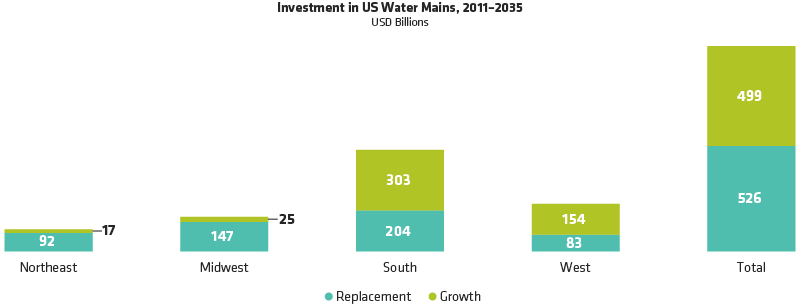-
For more ways to pursue good returns and good values in your portfolio, explore Inspired Investing, a new podcast series where senior leaders at Bernstein share their thoughts on investing with purpose, first-hand and check out related blogs here.
US Economic Growth
A Sustainability Story?

As of January 10, 2018
Data for 2017 are preliminary.
Source: Energy Information Administration

Source: American Water Works Association: Buried No Longer, Confronting America’s Water Infrastructure Challenge, 2016
-
The views expressed herein do not constitute research, investment advice or trade recommendations and do not necessarily represent the views of all AB portfolio-management teams.
Daniel C. Roarty is the Chief Investment Officer of AB’s Sustainable Thematic Equities team, which manages a suite of geographically diverse strategies aligned to long-term sustainable themes. Over the years, Roarty has played an active part in the sustainable investing community, acting as a subject-matter expert around the globe, including speaking at the 2018 Sustainable Investing Conference at the UN. He joined the firm in 2011 as global technology sector head on the Global/International Research Growth team and was named team lead in early 2012. Roarty previously spent nine years at Nuveen Investments, where he co-managed both a large-cap and a multi-cap growth strategy. His research experience includes coverage of technology, industrials and financials stocks at Morgan Stanley and Goldman Sachs. Roarty holds a BS in finance from Fairfield University and an MBA from the Wharton School at the University of Pennsylvania. He is a CFA charterholder. Location: New York

